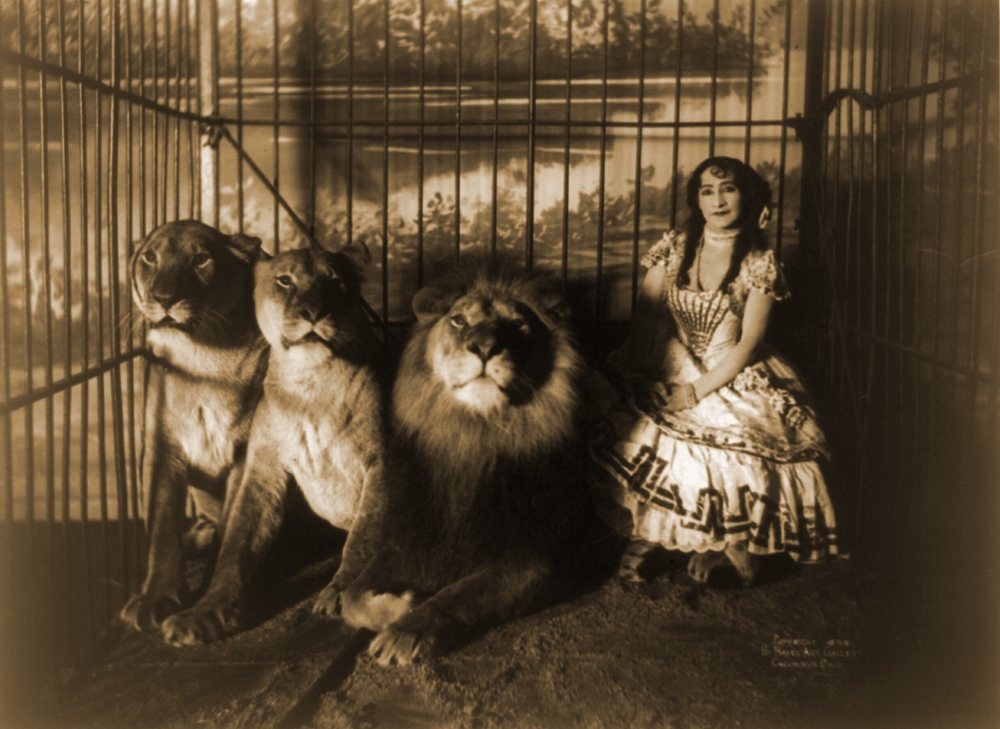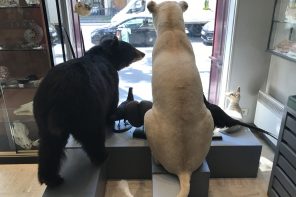It began with dog training, moved on to husband training, and ended with offers from Hollywood. Amy Sutherland’s account of how she used animal training techniques on her husband became one of the year’s most read articles after it appeared in the New York Times, and the American author has since been bombarded with book offers and talk of a film.
“I had an overwhelmingly positive response,” says Sutherland. “A few men got their feathers ruffled, although I wasn’t being derogatory.”
In her piece, What Shamu Taught Me About a Happy Marriage, Sutherland detailed how she used the ‘operant conditioning’ techniques of animal trainers on her husband, Scott—and improved her marriage in the process.
Moorpark Community College
It all started when Sutherland, a journalist, found herself on the set of 102 Dalmatians for a Disney Magazine story. “I hung out with the animal trainers,” she says. Sutherland already had an affinity with animals, having volunteered as a dog walker at an animal shelter while writing her first book Cookoff, and having two dogs of her own. The film’s trainers told her about California’s Moorpark Community College, America’s premier teaching zoo, where students learn how to bond with wolves, teach baboons to skateboard and convince tigers to open wide for the dentist.
Sutherland decided the school could offer perfect material for a book, and spent a year commuting from her home in Maine to the school in California, watching students become animal trainers. It’s an exacting process because the stakes when dealing with wild animals can be high—one misstep, after all, and the tiger gets the dentist’s hand for lunch. To get the animals to do what they wanted, the students had to learn three fundamental things: clear communication, accurate timing and reinforcement.
“So much of what these students are learning is reading body language,” says Sutherland. “You have to be an astute observer and really concentrate and that’s what I liked – it brings you out of yourself.”
Being at Moorpark helped build Sutherland’s relationship with her own Australian shepherd, Dixie Lou. Despite many sessions at doggie school, Dixie just wouldn’t give Sutherland the respect she needed. “The dog wasn’t sure if I was an alpha or not,” says Sutherland.
Sutherland mentioned the problem to wildlife educator Brenda Woodhouse, who advised her to give up trying to dominate the dog, and just form a co-operative relationship instead. “I quit being an alpha and using a lower voice,” says Sutherland. Once she stopped thinking about herself and her own behaviour, Sutherland was able to spot when the dog was trying to be boss. “I got smarter about her body language.”
Which proves something else Sutherland learned in school: you don’t have to be an alpha to get what you want. “Betas can get what they want without the scratch marks. They’re more inventive,” she says. “That’s heartening.”
And then Sutherland realised the lessons could also be applied to humans who are, after all, just a bunch of animals. “There are universal rules that apply to us, too,” she says, one of which is that animals will always return to something that’s pleasurable. “Every living thing will repeat anything that brings a reward.”
She started practising her new skills on her husband, Scott.
Animal husbandry
When he did something that annoyed her, she’d ignore it. When he did something that pleased her, he’d get a reward. For every dirty shirt Scott threw into the laundry basket, he’d get a ‘thanks’. If he threw in two, he’d get a kiss. The dirty piles began to disappear. To stop Scott crowding her when she cooked, Sutherland tried out a technique called ‘incompatible behaviour’, by setting out chips and salsa on the other side of the room. And then Sutherland tried out least reinforcing syndrome (LRS), which means doing nothing in the face of provocation. When Scott lost his keys, and his temper along with them, Sutherland didn’t react. Pretty soon, Scott’s temper subsided.
“Nagging doesn’t work because it’s focussing on what’s wrong, and on a punishing behaviour,” says Sutherland. “Always reward the behaviours you want and ignore the ones you don’t.” She says it’s a much better way to interact with her husband, and although the training hasn’t been a cure-all, it’s made her marriage a much nicer place to be.
These days, Sutherland uses her animal insights all the time. If she’s having a hard time communicating with someone, she asks herself what mixed signals she’s giving out. “If there’s an interaction that’s annoying me, I ask myself if there’s a way I’m contributing?”
But, of course there’s a flip side to this work, as all trainers eventually discover—the animals begin to train the teachers.
The human animal
Sutherland says she saw deep changes in the students at the exotic animal school. “What they’re learning are such important human skills and that’s the cool thing. You have to learn self control. Being a good observer, and being fast on your feet.”
The experience has changed Sutherland, too. She says that since she’s begun to see other people as just another group of animals, she gets less irritated than she did. “You know when you get off a plane and there are people who stop right in the middle in front of everybody? I used to get annoyed, but now I just think ‘that’s alpha behaviour’.”
And if you’re pitying her performing seal of a husband, consider this: in order for her techniques to work, Sutherland had to show him more affection and stop nagging him. Not only is the Sutherland marriage happier, there aren’t as many dirty clothes on floor. More than that, Scott has learned to use least reinforcing syndrome to his own advantage. When his wife starts whinging, he just gives her a blank stare and she stops complaining. Even Dixie is calmer.
Felicity Carter
This article first appeared in Bark! magazine in 2007.




